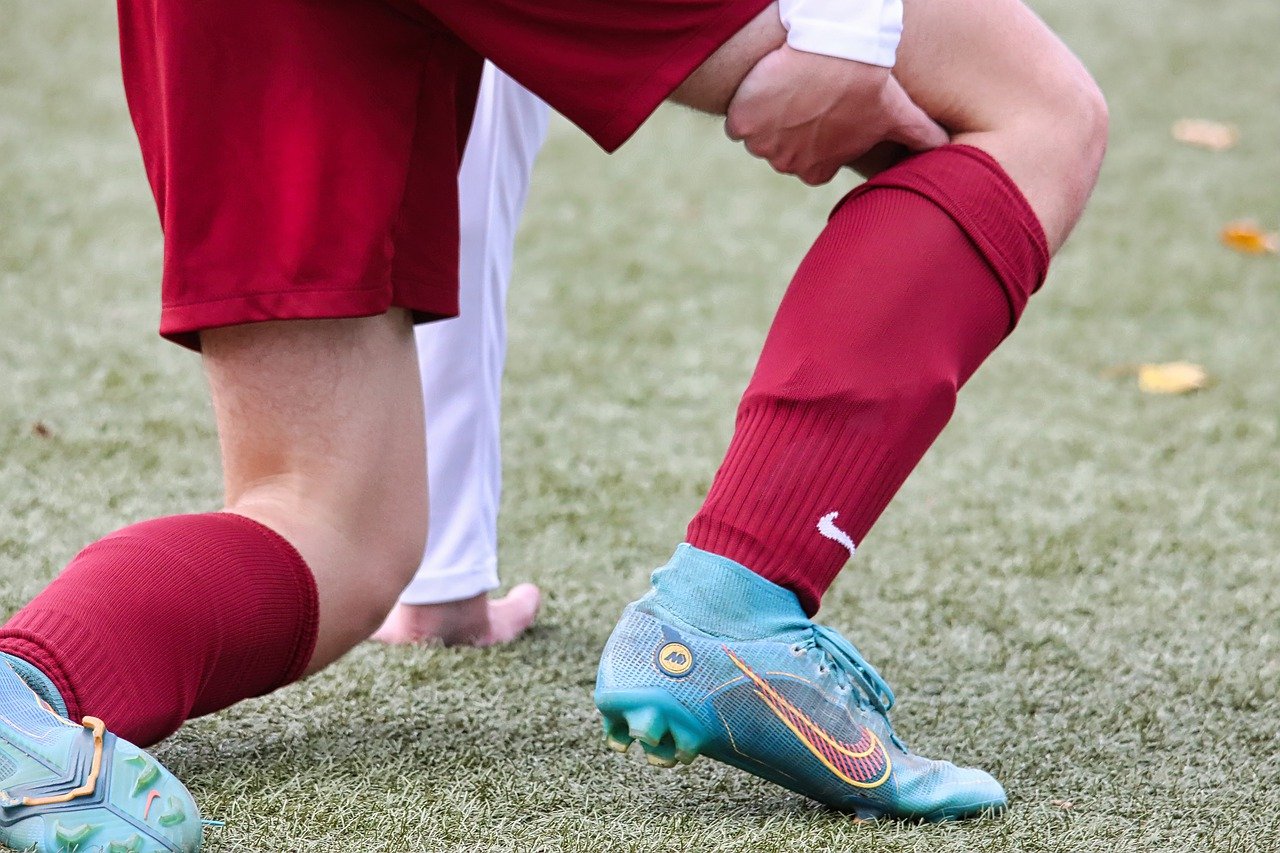WellHealthOrganic Surgery for Wrist and Ankle Injuries: An all-encompassing guide
Suffering from wrist and ankle injuries is something everyone is experiencing nowadays, with the extent and intensity of an active lifestyle as the basis; most injuries are sports-related and work-related. It could be ligaments or tendons. From the minor aches sprains and hard fractures, there could also be severe breaks resulting to surgery.
WellHealthOrganic, as one of the latest and innovative healthcare providers, offers numerous avenues to patients who either travel abroad or seek solutions within the country and go back home with promised proposals for wrist and ankle surgery which would promise them a good condition in life. This review discusses the wrist and ankle injuries in detail and their importance for surgery, like how these injuries will be treated by WellHealthOrganic with advanced skills and holistic approach.
Understanding Wrist and Ankle Injuries
A variety of causes lead to wrist and ankle injuries, but it is usually due to one out of the following types of damages such as bone, tendons, ligaments, and muscles. Simplest sprains, then shocks from minor or more serious fractures-demand proper care and treatment because any such injury is individual and requires special care for itself.
Understanding Wrist and Ankle Injuries Wrist and ankle injuries can occur for a variety of reasons, but they are often categorized based on the type of damage they cause to bones, tendons, ligaments, and muscles. These injuries can range from simple sprains to more severe fractures, and each injury requires specific treatment and care.
Common Types of Wrist Injuries
- Fractures: A fracture is one of the most common wrist injuries and occurs when one or more bones in the wrist break. A fall onto an outstretched hand is the most typical cause of a wrist fracture. Common fractures include distal radius fractures and scaphoid fractures.
- Sprains and Strains: A wrist sprain occurs when the ligaments in the wrist are overstretched or torn, while a strain involves the muscles or tendons. These injuries commonly occur because of sudden, excessive movements.
- Tendonitis: This is an inflammation of the wrist tendon which is most often caused by repeated movements or overuse. This might lead to pain and also decrease the range of motion.
- Carpal Tunnel Syndrome- not exactly an injury, carpal tunnel syndrome presses the median nerve. Causes pain, numbness, and also a little muscle weakening in the hand and wrist. This also usually results from repeated movements.
- Dislocations- Wrist dislocation refers when the bones in the wrist are out of alignment and often from falls or accidents.
Common Ankle Injuries:
This is by far one of the most common forms of injury to the ankle. Occurring when ligaments are overstraining or ruptured, sprains are often a phenomenon of losing balance when active, such as in sports, like basketball, soccer, or when you are running.
- Fractures: Like the fractures in the wrist, an ankle fracture is where one or more bones in the ankle are broken. Ankle fractures often occur when there is an external injury or twisting of the ligaments.
- Achilles Tendon Injuries: It is the tendon that helps connect the calf muscles to the heel bone, thereby enabling movements to happen. Contusions or complete rupture of the Achilles tendon may result from frequent exertions or from potent, sudden activities.
- Ankle Instability: After frequent ankle sprains, recurrent ankle sprains lead to chronic instability of the ankle, an ankle that is always unstable and susceptible to many injuries. This will usually involve the need for operative repair of torn ligaments.
- Osteoarthritis: This is not caused by a single event in time. On the contrary, it progresses gradually as the ankle goes through the normal wear and tear with the cartilage being eroded. There is pain, swelling, and stiffness in this joint.
why surgery may be neccesary
While many wrist and ankle injuries can be treated with rest, ice, compression, and elevation (R.I.C.E), some injuries are too severe or complex to heal through conservative methods. Surgery may be necessary when:
The Injury is Severe: For example, fractures that do not align correctly, dislocated joints, or ruptured ligaments may need surgical repair to restore proper function.
Non-Surgical Treatments Fail: If physical therapy, medications, or other non-invasive treatments fail to alleviate symptoms, surgery may be the next option.
Chronic Pain: In some cases, patients experience ongoing pain, swelling, and instability due to previous injuries. Surgery may be necessary to remove damaged tissue, realign bones, or stabilize the joint.
Rehabilitation Limitations: In some cases, conservative rehabilitation may not fully restore the range of motion or strength of the injured wrist or ankle. Surgery may help achieve better functional outcomes.
WellHealthOrganic Approach to Surgery for Wrist and Ankle Injuries
WellHealthOrganic is a pioneer in providing advanced medical care for a wide range of musculoskeletal injuries, including those affecting the wrist and ankle. Their approach is grounded in the combination of cutting-edge technology, minimally invasive techniques, and holistic healing practices to provide comprehensive care for patients.
Minimally Invasive Surgery Techniques
Minimally invasive surgery, often referred to as arthroscopic surgery, is one of the key methods used by WellHealthOrganic for wrist and ankle injuries. This technique uses small incisions, a camera (arthroscope), and specialized tools to perform surgery with minimal disruption to the surrounding tissues. The advantages of minimally invasive surgery include:
- Reduced Risk of Infection: Smaller incisions reduce the exposure of internal tissues to bacteria, lowering the risk of infection.
- Faster Recovery: Because there is less trauma to the body, patients experience less pain and heal faster.
- Minimal Scarring: Smaller incisions lead to less noticeable scarring, which is particularly important for those concerned about cosmetic results.
- Less Post-Operative Pain: Patients typically report less discomfort after minimally invasive surgery, as the procedure involves less tissue manipulation.
Personalized Treatment Plans
At WellHealthOrganic, no two patients are treated the same. They understand that every individual’s injury is unique, and thus, each treatment plan is tailored to meet the specific needs of the patient. Before recommending surgery, WellHealthOrganic employs a thorough diagnostic process, including imaging techniques such as X-rays, MRIs, and CT scans to assess the full extent of the injury.
Once the diagnosis is complete, the surgical team collaborates with physical therapists and rehabilitation experts to create a post-surgery plan that ensures optimal recovery. This may include a combination of exercises, physical therapy, and lifestyle modifications to support the healing process.
Holistic Healing
WellHealthOrganic emphasizes a holistic approach to healing, which goes beyond the surgical procedure itself. This includes offering alternative therapies such as acupuncture, chiropractic care, and massage therapy to aid in the healing process. Their focus on the whole body helps promote recovery, manage pain, and restore function in the wrist and ankle.
Cutting-Edge Technology and Equipment
WellHealthOrganic employs the latest advancements in medical technology to perform surgery with precision and efficiency. From 3D imaging to robotic-assisted surgery, their state-of-the-art tools ensure that each procedure is performed with the highest level of accuracy. These technologies help in diagnosing the injury more accurately, planning the surgical procedure, and monitoring the patient’s recovery in real-time.
Post-operative Care
Success in surgery is no longer exclusively dependent on the procedure itself, but it is influenced also by all the necessary post-operative care that is needed. This company provides full post-operative care, including pain management, wound care, and regular follow-ups.
In addition, rehabilitation programs are specifically designed for different functions, and in its area of influence, more so than general physical therapy, this rehabilitation specifies certain exercises to specifically focus on wrist and ankle rehabilitation, aimed at the strengthening and return to the natural, everyday activities possible of the patient.
Recovery-and-Rehabilitation
Recovery-and-rehabilitation also depends on the nature of the surgery, on the severity of the injury, whether the particular bones are located in the wrist or the ankle, and the nature of the injury. Scans indicate that this is, therefore, a sterile design that is not only invasive but also comparative in the end by pathologists who are never used to the adventurous spirit of the surgeon to settle their doubts.
Mostly, it merely goes through some important phases:
Initial Post-Op Care: Pain is managed, wounds are cared for, and certain movements that could hinder the process are warned against right after the surgery. Immobilization of the wrist or ankle by a temporary cast, splint, or brace may be done.
Physical Therapy: Recovery involves the extra healing phase, wherein the physical therapy becomes more important in making the patient recover his strength band mobility and with good, quality rehabilitation programs or specialized on the basis of what the patient may need to improve range of motion, strength, and flexibility.
In gradation: Returning to activity usually progresses with time, and with a look at the severity of injury and surgery, they will advise us of when it may be safe to engage in all our everyday activities even sports/exercise and work modes.
Long-Term Maintenance: More important and given more priority than just having relief is promoting them into activities, all-in-the cause of prevention of injuries. Patients learn how a lot more exercises can also assist in taking preventive measures against possible injuries, as well as in providing for keeping all the joint healthy with time.
Frequently Asked Questions (FAQs)
1. What is the recovery period for wrist or ankle surgery?
Recovery time varies depending on the specific surgery, but most patients can expect to be in a cast or splint for several weeks. Full recovery, including physical therapy and rehabilitation, can take anywhere from 6 weeks to 6 months.
2. How can I manage pain after surgery?
Pain management after surgery typically involves prescription or over-the-counter pain medications, as well as methods like ice packs and elevation. Your doctor will provide specific instructions to ensure effective pain control during recovery.
3. Will I need physical therapy after surgery?
Yes, physical therapy is often an essential part of recovery, as it helps to restore mobility, strength, and flexibility in the joint after surgery.
4. Are there any risks associated with wrist or ankle surgery?
As with any surgery, there are risks, including infection, blood clots, nerve damage, or poor healing. However, complications are relatively rare, and your surgeon will take steps to minimize risks.
5. Can I return to sports after surgery?
In most cases, you will be able to return to sports after recovery, but high-impact activities should be avoided until your surgeon clears you.Your physical therapist can help you safely regain strength and flexibility.
Conclusion
WellHealthOrganic offers a comprehensive and patient-centered approach to treating wrist and ankle injuries. By combining minimally invasive surgery, cutting-edge technology, and a holistic healing philosophy, they help patients recover faster and more effectively.
Whether you are dealing with a simple sprain or a complex fracture, WellHealthOrganic’s team of experts ensures that you receive the best possible care. Through personalized treatment plans, advanced surgical techniques, and thorough post-operative care, WellHealthOrganic provides a path to healing that promotes long-term health and wellness.
If you or a loved one is suffering from a wrist or ankle injury, consider seeking expert care at WellHealthOrganic. Their holistic approach to surgery and recovery can help you return to an active, pain-free lifestyle in the shortest time possible.

